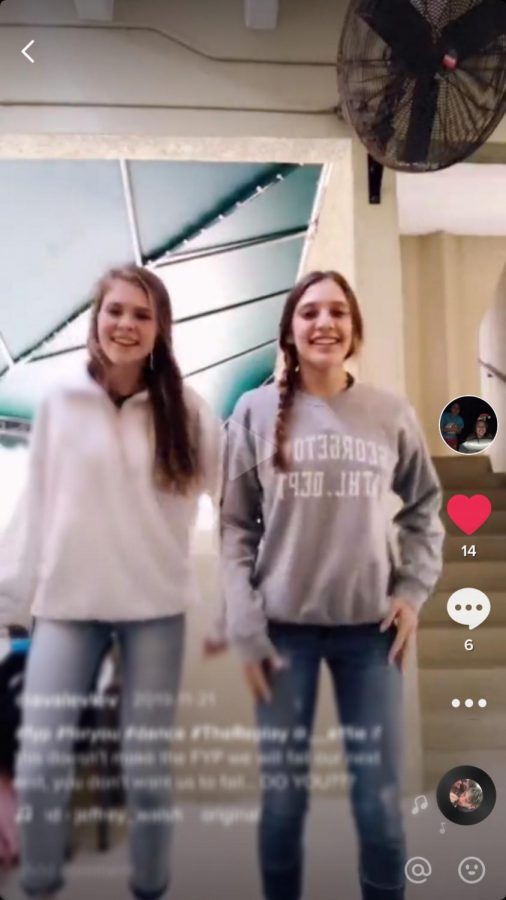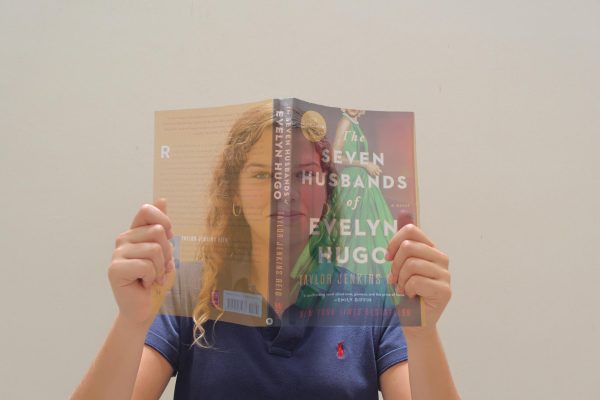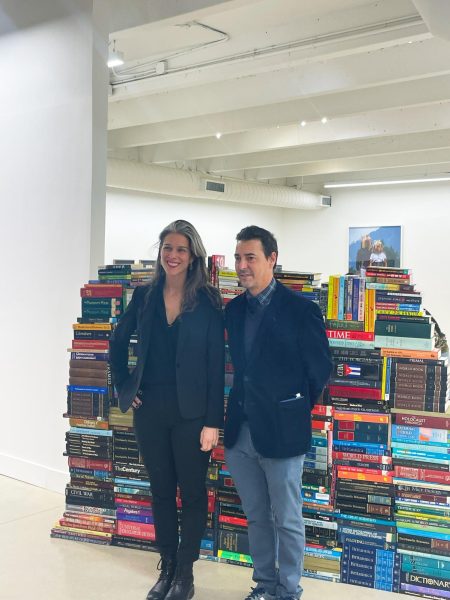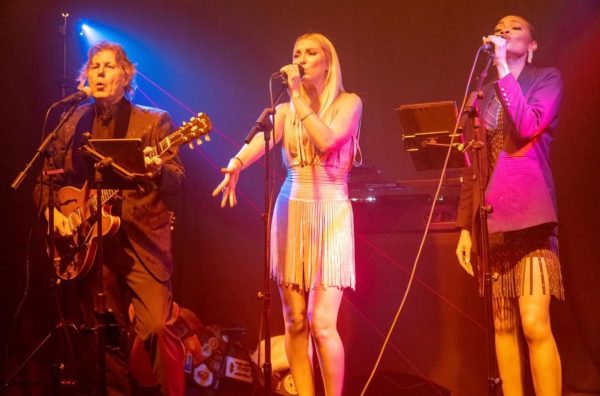TikTok becomes the medium of the moment
For RE TikTokers, the app has become a powerful way to express yourself — but there are drawbacks
As RE students waded into a new and unfamiliar universe of AP exams this year, one app in particular helped them cope: TikTok. The popular video-sharing app was flooded with AP content during the two weeks of testing in mid-May, often serving as a barometer for how students felt about the new testing situation. Alex Dray ‘21 made a TikTok about two symbols in math that mean the same thing, coordinating a little choreography with some audio saying, “Hello, we are twins.” It was an AP Calculus hit. RE science teacher Dr. Stump even tried her hand at TikTok, depicting other students on test day feeling insecure and then imagining her students walking into the test with sunglasses on.
The RE student body is very involved with TikTok, constantly creating all sorts of content for a variety of audiences. Some students make comedy pieces; others provide information; some even make academic content. With the move to REmote School this semester, the app became more popular than ever — and RE creators, in turn, found themselves experiencing varying levels of virality and spending more and more time making their TikToks. In many ways it has become the medium of the moment, channeling students’ feelings and frustrations about quarantine and every other aspect of life as a teenager right now. As the platform continues to serve as a potent and popular form of expression for RE students, it raises a question that arises when any new medium comes into its own: Is TikTok art?
“Depending on how you define art, it’s art, but you may not have to be Picasso,” said Matthew Gallagher ‘21, whose most popular TikTok clocked in at 350,000 views.
“It is absolutely an art. Art is not just painting. Art is theatre. Art is music. Art is dance. Art is a way of expressing yourself,” said Asher Lieberman ‘20.
That capacity for self-expression is one of the main things that RE’s TikTokers celebrate about the app, and one of the main things that has rocketed Lieberman’s account to mini-stardom. With over 1 million followers, Lieberman has become an inspiration of sorts for many RE TikTokers hoping to go viral. His best performing TikTok had over 20 million views.
“I do a lot of relatable humor. Everyone feels the stress of high school, and I see comedy as a way to get out of that. I get so many people telling me that my TikToks get them through stressful times. Sometimes, it’s the content I didn’t even think was funny,” said Lieberman.
In the past, Lieberman would post for the sake of posting, but now he follows a rule that he will only post when he thinks of something. He will never post something if he has to actively think of something to post. His methods are working, and they highlight another aspect of the medium that viewers and creators appreciate: the way it rewards spontaneity.
Daniella Sanchez ‘21 compared it to other movements in art history: “Spontaneity is largely associated with the impressionist and post impressionist periods,” she said, adding that TikTok also “sort of reminds me of Jeff Koons. He is known for plagiarizing things and making replications of other works of art. It is also very kitschy.”
For Zoe Punjwani ‘22, whose first TikTok gained 213,000 views overnight, TikTok’s way of rewarding spontaneity incentivizes authenticity: “The posts that I would try really hard on, none of them would become famous. I get more views when I try less,” she said. At the same time, she admitted that parts of it can be “a science,” forcing creators “to calculate and manipulate what you do.” “You have to perfect the hashtags and post at a certain time if you want to get on the For You page,” she said.
“I don’t think it incentivizes authenticity,” Lieberman said. When TikTok dancing goes viral, “The person who creates the dance is super talented and unique, but their video doesn’t perform well. They are having fun. That is what TikTok supports.”
For Sanchez, TikTok is definitely a “a way of sharing art,” but the way the platform rewards plagiarism can be problematic for creators. “I think that if a person wanted to be recognized for their dance, their art, it is not right for people to take it from them and profit. TikTok is largely a platform to create for the public and to appease others through the screen for money or whatever other things the creators want. It is not about creating, and that is where the copying comes from,” she said.
TikTok has other dark sides. Fame can quickly curdle into too much attention, as Gallagher discovered last September when two consecutive posts went viral.
“The first day of school back from that, I didn’t know many people had seen it,” he said. “When I got to school and realized every student on campus had seen them, I freaked out. I wanted to go home. I stayed, but in my mind I was freaking out. My Snapchat broke for a month. I always had 2,000 notifications.”
There is also a subset of TikTok users that share racist, homophobic, or misogynistic content, labeling it as “dark humor.”
“If you have to put a disclaimer on it, don’t post it,” said Lieberman. “TikTok does a good job at making things that shouldn’t have ever been posted go viral, and then the person gets cancelled.”
The tool is powerful, and people on the platform can be vicious. “It could potentially ruin your life. People defend themselves by saying ‘Old TikTok made jokes like this,’ but it really wasn’t the same.”
Another aspect of the platform that RE creators take issue with is the fact that TikTok is curated, like a museum. Content in the For You page is screened for appropriate audiences, preventing TikTok from being as representative as art, collectively, can be.
One byproduct of this gatekeeping is that the app can reinforce cultural norms of attractiveness. “Back in 2018, TikTok had nothing to do with attractiveness,” said Lieberman. “I’m jealous of how people [on TikTok] look. It is very, very toxic in that sense. [Some TikTokers] don’t have talent, yet are getting millions upon millions of likes.”
The more likes and engagement a piece of content gets, the more likely it is to end up on someone’s For You page. Lieberman added, “It definitely hurt my self esteem. It has gotten to the point where I think TikTok has to make a statement about it.”
Sanchez agreed. “Before I deleted tik tok, I followed a lot of body positivity influencers, and I realized that the algorithm of TikTok could delete some of their content. It is very frustrating because it is okay to be curvy. TikTok is sending a message and creating a counterintuitive culture.”
Lieberman said that it is known within the TikTok creator community that the “follower to like ratio is a representation of how attractive you are,” and that it can really hurt when your ratio is not high, despite achieving success on the app.
Among other aspects of the app, that norm makes it concerning when younger kids start to participate. “My friend’s younger sister is doing dances that she shouldn’t be doing at her age,” said Olivia Rubell ’23. “I don’t get how some [elementary school] kids get the humor. It is concerning.”
Whether or not it counts as art, TikTok has indisputably become an important form of entertainment for RE students during the era of social distancing. With students separated from their friends, it has served as a way to stay connected.
“Tik Tok is such an easy way to pass time. There are so many trends to hop on and you can ‘duet’ with your friends. It helps bring people together right now. It gives you something to just have fun with when you are bored,” said Punjwani.
“It could be art,” said Rubell. “Mainly, it’s just a big part of our generation, like Vine and Musically. Anyone can get famous.”
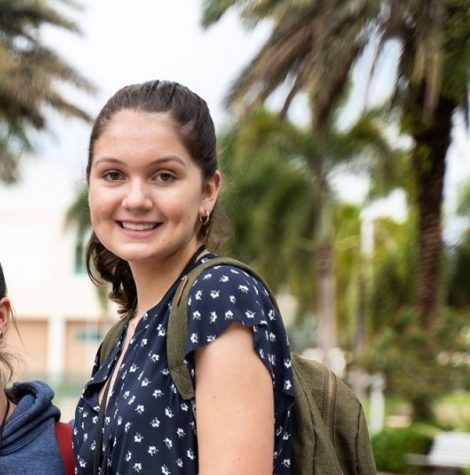
Liza Dill is the Opinion Editor of The Catalyst. For the 2019-2020 school year she served as Community News Editor. She has been contributing since her...


